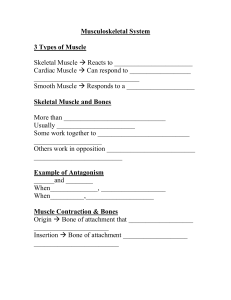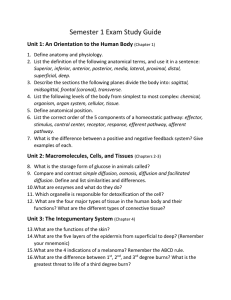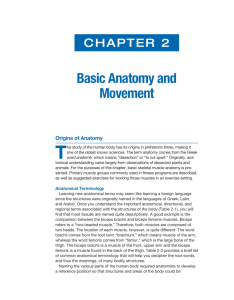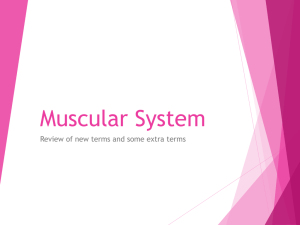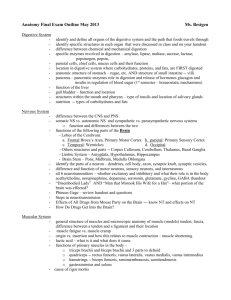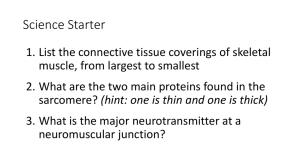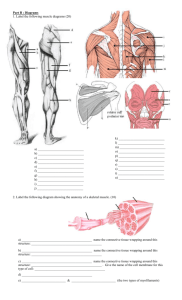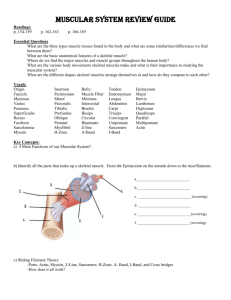Muscular System Study Guide
advertisement
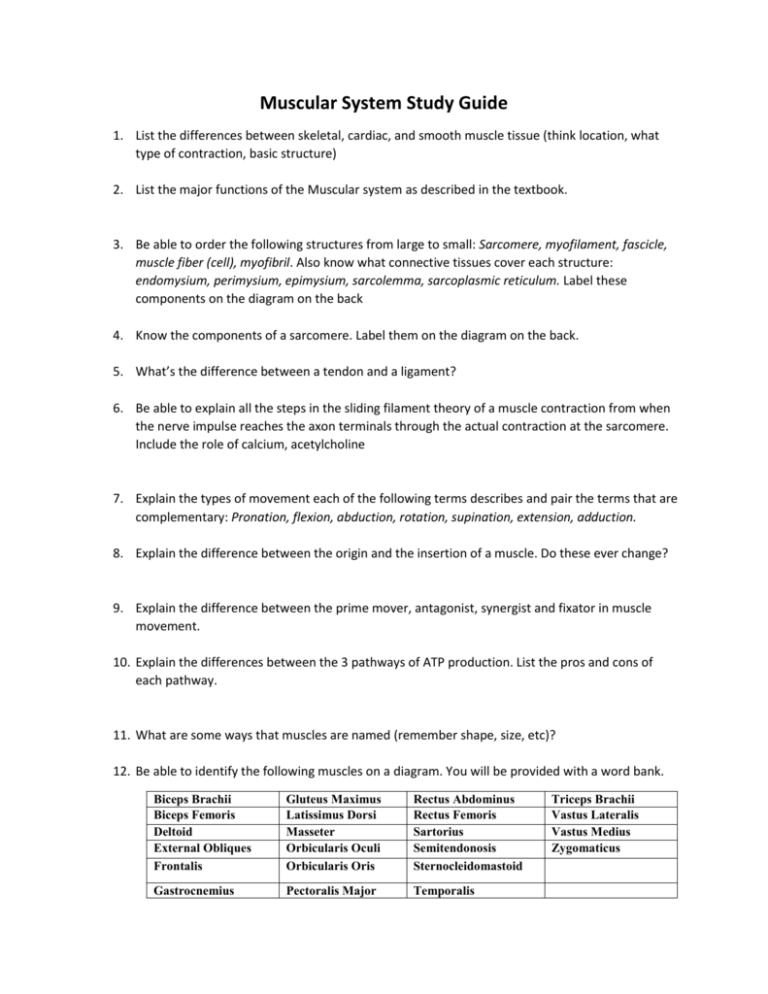
Muscular System Study Guide 1. List the differences between skeletal, cardiac, and smooth muscle tissue (think location, what type of contraction, basic structure) 2. List the major functions of the Muscular system as described in the textbook. 3. Be able to order the following structures from large to small: Sarcomere, myofilament, fascicle, muscle fiber (cell), myofibril. Also know what connective tissues cover each structure: endomysium, perimysium, epimysium, sarcolemma, sarcoplasmic reticulum. Label these components on the diagram on the back 4. Know the components of a sarcomere. Label them on the diagram on the back. 5. What’s the difference between a tendon and a ligament? 6. Be able to explain all the steps in the sliding filament theory of a muscle contraction from when the nerve impulse reaches the axon terminals through the actual contraction at the sarcomere. Include the role of calcium, acetylcholine 7. Explain the types of movement each of the following terms describes and pair the terms that are complementary: Pronation, flexion, abduction, rotation, supination, extension, adduction. 8. Explain the difference between the origin and the insertion of a muscle. Do these ever change? 9. Explain the difference between the prime mover, antagonist, synergist and fixator in muscle movement. 10. Explain the differences between the 3 pathways of ATP production. List the pros and cons of each pathway. 11. What are some ways that muscles are named (remember shape, size, etc)? 12. Be able to identify the following muscles on a diagram. You will be provided with a word bank. Biceps Brachii Biceps Femoris Deltoid External Obliques Frontalis Gluteus Maximus Latissimus Dorsi Masseter Orbicularis Oculi Orbicularis Oris Rectus Abdominus Rectus Femoris Sartorius Semitendonosis Sternocleidomastoid Gastrocnemius Pectoralis Major Temporalis Triceps Brachii Vastus Lateralis Vastus Medius Zygomaticus
